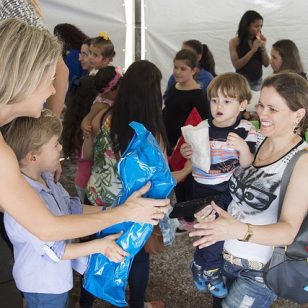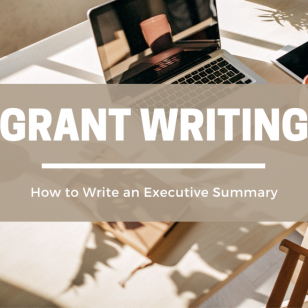By Kelsey Boudin
President and Founder, Southern Tier Communications Strategies, LLC
Grant funders want to know your nonprofit mission doesn’t live in a bubble. Support and collaboration are key to success for many nonprofits fulfilling grant processes.
One organization often serves as a step in the journey, a cog in the wheel, or a phase in a continuum of services for the people jointly served by another. Letters of support and memoranda of understanding solidify these relationships and show definitively how each party supports or commits to their respective roles in a grant project.
Now, letters of support (LOS) and memoranda of understanding (MOU) aren’t to be confused with legally binding service contracts (these are great, so don’t shy away from pursuing them when possible).
Letters of support show an organization or individual believes in your nonprofit mission. Memoranda of understanding (or letters of commitment) go a step further. They affirm to grantmakers that two (or more) organizations with complementary missions will work toward grant deliverables by fulfilling their respective roles. That support and commitment are HUGE to funders! Many times, letters of support and memoranda of understanding are mandatory parts of a full proposal, especially with government grants.
What Exactly Do Letters of Support and Memoranda of Understanding Signify?
As you build a great grant-writing strategy and relationships with funders, it’s just as important to develop collaborations with your fellow nonprofits and community-service agencies to include within proposal packages and grant narratives.
They show you’ve done your due diligence, legwork and relationship-building to make your grant project work. They show funders that you’re so invested in the success of your project that you’ve sought outside support for grant collaboration. Here’s a more thorough breakdown of what each seeks to accomplish.
Letters of Support
Grant letters of support show that like-minded organizations and individuals stand behind your cause. They may also indicate support for your organizational mission as a whole and your track record for success.
As much as grant funders want to see and hear your accomplishments and plans for the future, an outside, unbiased, third-party perspective carries weight for verification. You may say you’re the best nonprofit organization around — one that may have the perfect plan for helping impoverished children, housing the homeless, improving health-care access, or anything else. But seeing someone else say you’re the perfect organization with that perfect plan, lends credence to each aspect of your proposal.
Letters of support may come from a variety of sources:
- Community partners
- Service recipients or constituents
- Elected officials
- Fellow nonprofit leaders
- Major donors
- & More
These perspectives are invaluable. A community partner may testify to your success in tackling such initiatives. A service recipient may recall how their family’s life improved as a direct result of your programs. An elected official may note how a piece of legislation or an entire government body works in lockstep toward mutual goals. Meanwhile, fellow nonprofit leaders and major donors may express how past collaboration and wise spending met past goals — and, more importantly, how current collaboration and funding will serve complementary missions today and tomorrow.
And that’s the point.
As much as letters of support can acknowledge past successes from grant collaboration, they’re inherently future-focused. Letters of support indicate exactly that, in letter form: that the organization or individual supports the mission and the proposed grant project moving forward.
What about formatting? A standard letter format — preferably kept to a page or less — should suffice. (Helpful hint: letters of support may also offer varying levels of commitment to grant deliverables more commonly seen in memoranda of understanding, explained below.)
Memoranda of Understanding
A memorandum of understanding (MOU) — the plural, as awkward as it looks, is memoranda — commits an organization or individual to serve a role(s) in a grant process. While not legally binding, it’s a document that spells out exactly the roles a grant seeker and collaborator(s) will perform to fulfill grant deliverables.
As we mentioned earlier, many grant projects may require collaboration from multiple entities to be successful. Parts of that process may represent steps in a logical service continuum, in which one organization completes one task and subsequently hands off (or refers) responsibilities to another.
We see this often in health-care grants that see one organization providing treatment, another offering rehabilitation, and perhaps another connecting participants to placement services and beyond. It’s also common for training organizations that provide a necessary step toward further education or vocational training and job placement. (Sometimes the big picture is that much greater than one organization could tackle single-handedly. And that’s a good thing in the eyes of grant funders.)
MOUs list the participating organizations and/or individuals. Naturally, it includes dates of agreement and the firm or soft date the agreement may end. Then it indicates the purpose of whatever relationship it entails. It establishes the scope of the agreement and to what extent participating parties will work toward goals. This may include:
- Identifying, referring and/or accepting program participants into services
- Data collection and reporting
- Financial agreements (or obligations)
- Non-disclosure/privacy agreements
- Disclaimers and opt-outs
Again, memoranda of understanding are not binding for grant collaboration. But they’re close. They’re provided in grant processes as a strong show of good faith that all parties involved will do everything possible to strive toward a mutual goal. As for formatting, they may closely mirror a legal contract, so it may be best to seek legal counsel for their drafting.
Letters of Support and Memoranda of Understanding Highlight Grant Collaboration
Grant funders want to see the big picture. The big picture is often so much bigger than your organization itself. Grant letters of support and memoranda of understanding provide that big picture.
Of course, you should note them, where possible, in your grant narrative so funders can see at an initial glance that your nonprofit initiative doesn’t exist in a silo. They often fit perfectly within supplementary documentation required in most grant-seeking processes. While they stop short of contractual agreements, they certainly note in writing that your plan has merit — and not just for you. As with any good program or initiative, it takes a village to make anything worthwhile work.
There’s no shame in asking for help. Southern Tier Communications Strategies, LLC manages clients seeking grant funding by providing grant-writing and research services, as well as guiding the relationship-building process with likely funders. Contact Kelsey Boudin, STCS President and Founder, at ke****@************************es.com for more information.







